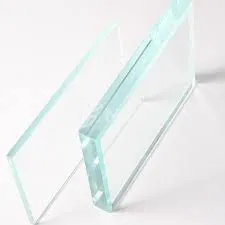The Versatile Uses of Architectural Glass
Architectural glass plays a crucial role in contemporary construction and design, combining functionality with aesthetic appeal. Its versatility makes it an indispensable material in a variety of architectural applications, contributing to the sustainability, safety, and visual impact of buildings. This article explores the diverse uses of architectural glass and its implications for modern architecture.
1. Facades and Curtain Walls
One of the most common uses of architectural glass is in building facades and curtain walls. These structural elements not only protect the interior from external elements but also serve as a design canvas that enhances the building's visual appeal. Glass facades allow for uninterrupted views and natural light while offering a modern aesthetic. They can be made from various types of glass, such as laminated, tempered, or insulated versions, which provide different levels of energy efficiency and safety.
2. Skylights and Roof Glazing
Skylights are another significant application for architectural glass. They illuminate interiors with natural light, reducing the need for artificial lighting and improving energy efficiency. Roof glazing systems can achieve this while also providing thermal insulation, making them ideal for both commercial and residential buildings. When designed properly, skylights can enhance the overall ambiance of a space and create a connection with the outdoors.
3. Interior Partitions and Glass Walls
In modern office design, glass partitions have become increasingly popular as they promote an open and collaborative environment while maintaining privacy. These interior glass walls allow natural light to permeate through the space, creating a brighter and more inviting atmosphere. From conference rooms to individual workspaces, glass partitions can be customized to fit any design requirement and can also incorporate soundproofing features.
4. Windows and Glazing Systems
architectural glass uses
Windows are arguably the most essential aspect of architectural glass. Advances in glazing technology have led to the development of energy-efficient windows that offer superior thermal performance. Low-emissivity (Low-E) coatings, for example, significantly reduce heat transfer, keeping interiors comfortable year-round. Additionally, smart glass technology allows windows to adapt to changing light conditions, further enhancing energy efficiency.
5. Balustrades and Railings
Architectural glass is increasingly used in balustrades and railings, offering safety without compromising the view. Glass railings can create a seamless transition between indoor and outdoor spaces, especially in settings such as balconies, staircases, and terraces. With various treatment options, including frosted and tinted glass, these installations can enhance aesthetic appeal while ensuring structural integrity.
6. Energy Efficiency and Sustainability
Architectural glass also plays a vital role in sustainable building practices. The use of high-performance glass can significantly reduce energy consumption for heating and cooling. Moreover, the incorporation of solar control glass and photovoltaic panels helps harness solar energy, contributing to a building's renewable energy strategies. As architects and builders strive for green certifications, the role of architectural glass in promoting sustainability becomes increasingly important.
7. Aesthetic Enhancements
Beyond functionality, architectural glass is an artistic medium that allows for creative expression. From sculptures to stained glass installations, architects and artists can manipulate glass to produce stunning visual effects. This artistic use of glass not only enhances the aesthetic quality of architectural projects but also contributes to the overall cultural significance of the environment.
Conclusion
Architectural glass is a multifaceted material that serves numerous purposes in modern construction and design. Its extensive use in facades, interiors, and energy-efficient systems reflects the ongoing integration of architectural innovation with functionality and sustainability. As technology continues to advance, the applications of architectural glass will undoubtedly evolve, further enhancing its significance in the built environment. Whether in a metropolitan skyline or a residential neighborhood, architectural glass remains a testament to the beauty and efficiency of contemporary architecture.
 Afrikaans
Afrikaans  Albanian
Albanian  Amharic
Amharic  Arabic
Arabic  Armenian
Armenian  Azerbaijani
Azerbaijani  Basque
Basque  Belarusian
Belarusian  Bengali
Bengali  Bosnian
Bosnian  Bulgarian
Bulgarian  Catalan
Catalan  Cebuano
Cebuano  Corsican
Corsican  Croatian
Croatian  Czech
Czech  Danish
Danish  Dutch
Dutch  English
English  Esperanto
Esperanto  Estonian
Estonian  Finnish
Finnish  French
French  Frisian
Frisian  Galician
Galician  Georgian
Georgian  German
German  Greek
Greek  Gujarati
Gujarati  Haitian Creole
Haitian Creole  hausa
hausa  hawaiian
hawaiian  Hebrew
Hebrew  Hindi
Hindi  Miao
Miao  Hungarian
Hungarian  Icelandic
Icelandic  igbo
igbo  Indonesian
Indonesian  irish
irish  Italian
Italian  Japanese
Japanese  Javanese
Javanese  Kannada
Kannada  kazakh
kazakh  Khmer
Khmer  Rwandese
Rwandese  Korean
Korean  Kurdish
Kurdish  Kyrgyz
Kyrgyz  Lao
Lao  Latin
Latin  Latvian
Latvian  Lithuanian
Lithuanian  Luxembourgish
Luxembourgish  Macedonian
Macedonian  Malgashi
Malgashi  Malay
Malay  Malayalam
Malayalam  Maltese
Maltese  Maori
Maori  Marathi
Marathi  Mongolian
Mongolian  Myanmar
Myanmar  Nepali
Nepali  Norwegian
Norwegian  Norwegian
Norwegian  Occitan
Occitan  Pashto
Pashto  Persian
Persian  Polish
Polish  Portuguese
Portuguese  Punjabi
Punjabi  Romanian
Romanian  Russian
Russian  Samoan
Samoan  Scottish Gaelic
Scottish Gaelic  Serbian
Serbian  Sesotho
Sesotho  Shona
Shona  Sindhi
Sindhi  Sinhala
Sinhala  Slovak
Slovak  Slovenian
Slovenian  Somali
Somali  Spanish
Spanish  Sundanese
Sundanese  Swahili
Swahili  Swedish
Swedish  Tagalog
Tagalog  Tajik
Tajik  Tamil
Tamil  Tatar
Tatar  Telugu
Telugu  Thai
Thai  Turkish
Turkish  Turkmen
Turkmen  Ukrainian
Ukrainian  Urdu
Urdu  Uighur
Uighur  Uzbek
Uzbek  Vietnamese
Vietnamese  Welsh
Welsh  Bantu
Bantu  Yiddish
Yiddish  Yoruba
Yoruba  Zulu
Zulu 

